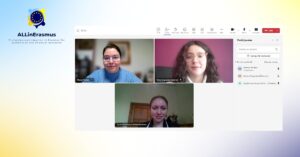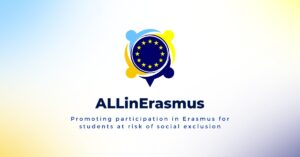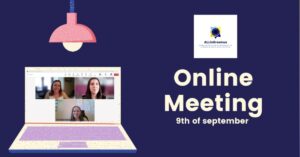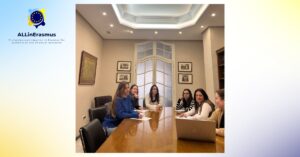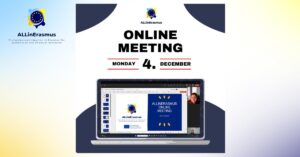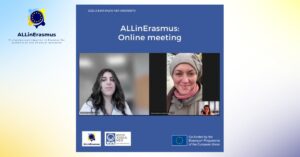ALLinErasmus
Promoting participation in Erasmus
for students at risk of social exclusion
The Project
Aim
ALLinErasmus is a project funded by the Erasmus+ program of the European Union, which aims to increase the participation of VET students at risk of social exclusion in Erasmus+ mobilities, by providing training content and tools to the VET professionals managing Erasmus+ mobilities. The project targets VET educators in charge of managing Erasmus+ mobilities, helping them learn how to reach and integrate students at risk of social exclusion in the different stages of Erasmus+ mobilities.
Objectives of the project
ALLinErasmus has, therefore, the following objectives:
• Providing VET professionals with training on the meaning behind social exclusion
• Increasing the interest in Erasmus+ mobilities of students at risk of social exclusion
• Facilitating the access to mobility opportunities among students at risk of social exclusion
• Increasing participation of students at risk of social exclusion in Erasmus+ mobilities
• Assisting VET professionals in charge of managing Erasmus+ mobilities in their centres
Target Groups
The project focuses on engaging VET (Vocational Education and Training) professionals to effectively reach and involve students with fewer opportunities in Erasmus+ mobility programs. The main target groups are VET professionals and students at risk of social exclusion. VET institutions are also targeted to integrate inclusive practices into their Erasmus+ protocols. Additionally, various other groups, such as organizations working with disadvantaged youth, educational centers, associations of teachers and trainers, and public bodies, can benefit indirectly from the project's outcomes, which include a toolkit, simulation, social media campaign, and best practices for promoting inclusivity in Erasmus+ programs.
Activities
ALLinErasmus Toolkit
Part 1: A theoretical guide explaining social inclusion and factors contributing to social exclusion.
Part 2: Practical guidelines for VET teachers on including individuals at risk of social exclusion in mobility programs.
Part 3: Compilation of Best Practices from across Europe, showcasing successful integration efforts.
